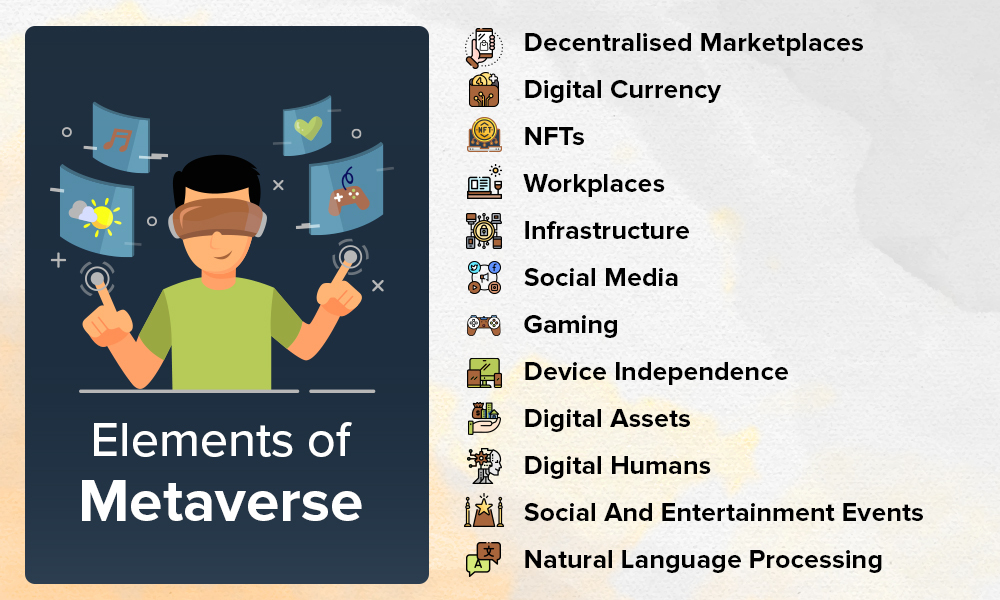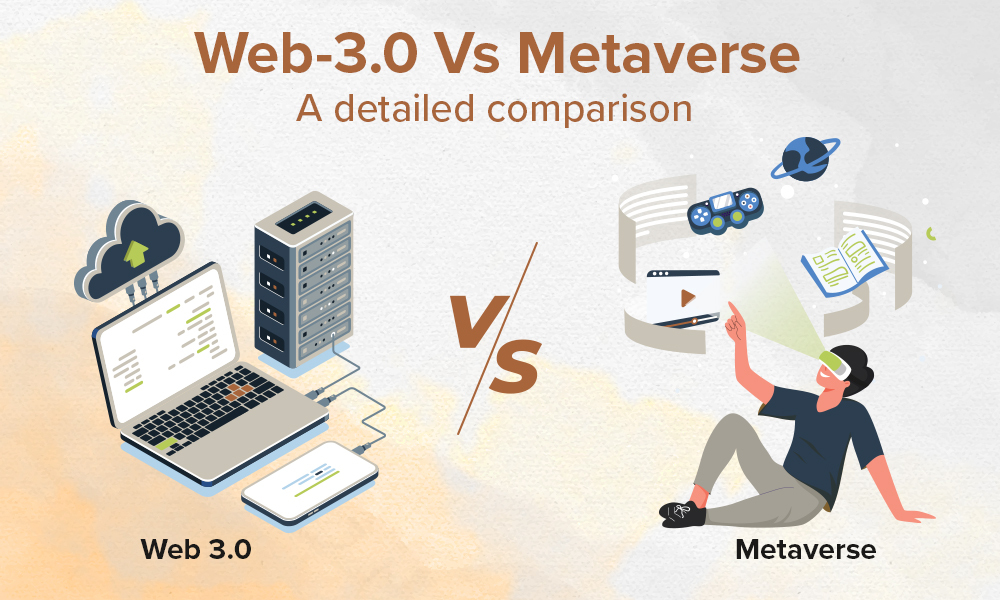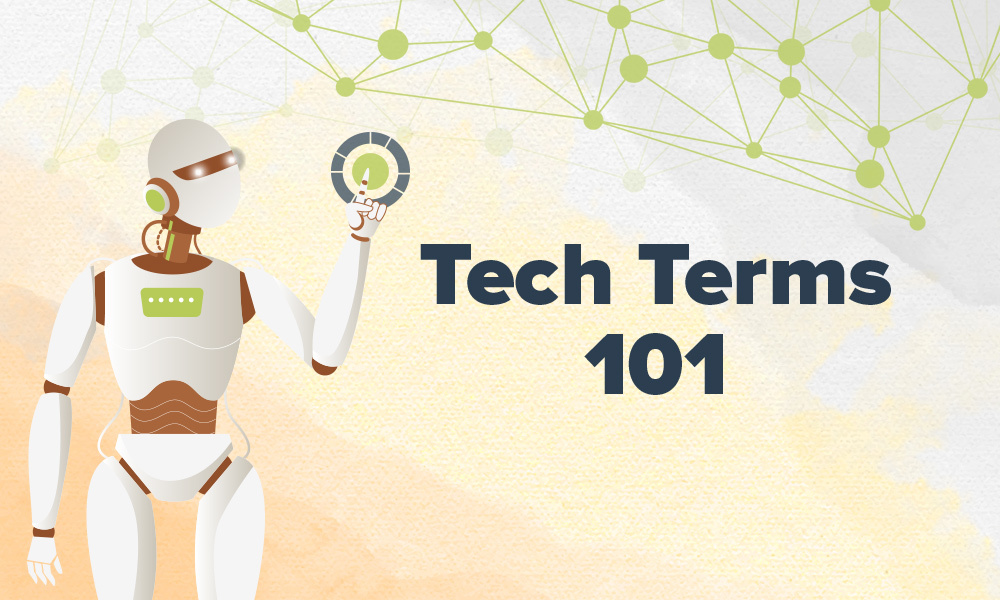The Internet these days is buzzing with new technology terms. Two terms that are attracting the most number of eyeballs and keeping the chat alive on Social Media platforms are Web 3.0 (often called web3) and metaverse. Often taken as synonyms, these two terms don’t refer to the same thing just like Blockchain and Decentralized Technology. When elaborated, each term, i.e. Web 3.0 and Metaverse illustrate a line of thought which is co-related yet cannot be used to explain the other. So, let’s take a look at the difference.
What is Metaverse?
To put it in very simple terms, the Metaverse is a new way for people to use the internet by transforming it from 2D to 3D. Instead of browsing and interacting with the web content by clicking and flipping different pages and tabs on the 2D screens on computers or mobile phones, this web content is transformed into three-dimensional objects.

Take online gaming as an example, instead of playing the games on a 2D webpage. The webpage is transformed into a 3D space where users can walk around inside, interact with other users and play the games as in-game avatars. Users can interact with the web content virtually and immerse themselves in the virtual space. With the integration of virtual reality headsets, users can even have an immersive experience visually and physically.
For the potential applications of the Metaverse, it is expected to be an emerging dimension which brings social media, work, entertainment, gaming and education all in one platform, by mirroring our real-world activities.
What is Web 3.0?

Web 3.0 is a convenient abbreviation for the project of rewiring how the web works, using blockchain to change how information is stored, shared, and owned. In theory, Web 3.0 which is blockchain-based could shatter the monopolies on who controls information, who makes money, and even how networks and corporations work. Experts argue that Web 3.0 will create new economies, new classes of products, and will generate new services online; that it will return democracy to the web; and that is going to define the next era of the internet. Like the Marvel Comic Wold villain ‘Thanos’, Web 3.0 is inevitable.
Or is it? While it’s undeniable that energy, money, and talent are surging into Web 3.0 projects, remaking the web is a major undertaking. For all its promise, blockchain faces significant technical, environmental, ethical, and regulatory hurdles between here and hegemony. A growing chorus of skeptics warns that Web 3.0 is rotten with speculation, theft, and privacy problems, and that the pull of centralization and the proliferation of new intermediaries is already undermining the utopian pitch for a decentralized web.
Meanwhile, businesses and leaders are trying to make sense of the potential — and pitfalls — of a rapidly changing landscape that could pay serious dividends to organizations that get it right.
Little Trivia
Most people, of course, don’t even really know what Web 3.0 is: In a casual poll on LinkedIn in March 2022, almost 70% respondents said that they didn’t know what the term meant.
The beginning of difference between Metaverse and Web 3.0
The objective of Web 3.0 is to keep the internet out of the monopoly of tech giants and make it public-controlled property. The most successful examples are the crypto world bitcoin market. On the other hand, tech mammoths are starting reformation or trying to acquire metaverse firms to control this world already. However, experts assured that public internet control would make it tough for corporations to own the meta world.
Objective difference Differences between Web 3.0 and Metaverse:
Aim
A major advancement of web 2.0, the Web 3.0 is the next-generation technology that wants a democratic and decentralized internet environment. An individual user can be an owner or shareholder, not a tech giant. In Web 3.0 , the user neither needs permission nor to follow predetermined rules. The Metaverse system wants to establish a 3D world or Virtual reality for users.
Application
Remember that Web 3.0 is the process engine that uses the blockchain’s advances. Metaverse is a new dimension that includes health, game, film, concert, entertainment, social platforms, education, and virtual training techniques that employ Web 3.0 tech advances to achieve their target.
Fundamental difference
The Metaverse is home to several critical technologies that help run the entire ecosystem. To build the Metaverse, connection, interfaces, decentralization, a creator economy, and advanced technology are all required. The target of Web 3.0 is to create a decentralized web-based only on the blockchain. Users can connect with online services using blockchain, governed by a decentralized peer-to-peer network world.
Avatars
Of course, the critical point of comparison is the portraits of web 3.0 and Metaverse. The metaverse is a 3D world where you can interact with 3D friends, objects, and places. For example, you can play games with your friends from the creator’s ground. In the case of Web 3.0, the users can cultivate, own, sell, and buy their content. In addition, users can charge their creations.
Expectations from both Metaverse and Web 3.0
While Web 3.0 is primarily concerned with who will rule (tech giants or individuals) and govern the internet in the future, the Metaverse is concerned with how users will interact with it. A large section of people now use computers, smartphones, and tablets to navigate websites and to access apps. Proponents of the Metaverse believe that we will utilize Virtual Reality (VR) technology to enter the internet tomorrow, navigating between virtual realms as digital avatars. By making use of the blockchain system for both of them one after another, data is owned, open, well-distributed, and collectively owned by peer-to-peer networks but it is different in the case where one can do business through VR, another helps contributors to own their data.
Underlying technology
Let’s make a set of basic technology behind the Web 3.0 process; blockchain, decentralized autonomous organization, and cryptocurrency. The crypto body emerged as the world’s first decentralized step towards Web 3.0. On the other hand, the Metaverse is built upon the basis of augmented reality, Human interface, edge computing, creator economy, NFTs, Multitasking UI, 5g, and wifi 6g (at the budding stage).
The fight for the rights
The objective of Web 3.0 is to keep the internet out of the monopoly of tech giants and make it public-controlled property. The most successful examples are the crypto world bitcoin market. On the other hand, tech mammoths are starting reformation or trying to acquire metaverse firms to control this world already. However, experts assured that public internet control would make it tough for corporations to own the meta world.
Further thoughts
Despite the differences, both the technologies of Web 3.0 and the Metaverse support each other perfectly. The Metaverse is a digital space whereas Web 3.0 favors a decentralized web. Web 3.0; it could serve as the basis for connectivity in the Metaverse. On the other hand, the creator economy in the Metaverse can supplement the vision of Web 3.0 by developing a whole new financial world with the implementation of decentralized solutions.



.jpg)
